
views
X
Research source
A sick guinea pig can go downhill very quickly if they are not treated by a vet.
Getting Your Guinea Pig Examined by a Vet
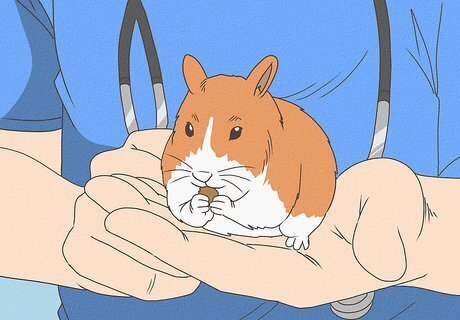
Let the vet examine your guinea pig as soon as they become ill. Once guinea pigs get sick, they can go downhill fast. If you notice any signs of illness in your guinea pig, bring them to the vet right away.

Discuss your guinea pig’s symptoms with the vet. Guinea pigs often contract an illness due to improper care, an improper diet, or interaction with another guinea pig who has an infectious disease. You should talk to the vet about your pig’s symptoms and your care procedures for your pig, as it can help them to determine the cause of their illness. Guinea pigs are susceptible to the following illnesses or issues: Digestive disorders caused by bacteria, viruses, or a parasite. The symptoms of a digestive disorder include diarrhea, weight loss, dehydration, a lack of energy and a lack of appetite. Dental issues, such as slobbering. This is caused by a misalignment of your guinea pig’s teeth, which then make it difficult for your guinea pig to swallow or chew. This can result in excessive slobbering or drooling. They may also experience weight loss, bleeding from the mouth, or abscesses in their mouth. Nutritional disorders, such as a vitamin C deficiency. Like other small mammals, guinea pigs cannot produce their own vitamin C and must eat vitamin C in their diet. If your guinea pig has a vitamin C deficiency, they may display an inability to walk around, a limp, or low energy. An adverse reaction to antibiotics. Guinea pigs are highly sensitive to certain antibiotics and penicillin-based drugs such as amoxicillin are toxic to guinea pigs. If your guinea pig has an adverse reaction to antibiotics, they may display symptoms like diarrhea, a lack of appetite, dehydration, or a drop in body temperature. Sometimes, antibiotic poisoning is fatal to guinea pigs.
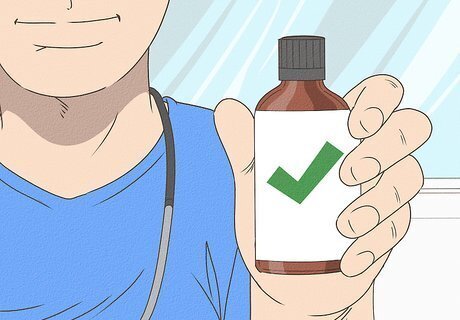
Receive treatment and care instructions from the vet. The vet should examine your guinea pig, noting their symptoms, and prescribe medication for their illness. The vet may also suggest certain home care tactics you can try to make your guinea pig more comfortable and help them recover. Make sure your vet does not prescribe any oral penicillin-based drugs, including penicillin, ampicillin, lincomycin, clindamycin, vancomycin, erythromycin, tylosin, tetracycline, and chlortetracycline for your guinea pig, as they can harm your guinea pig. The vet should prescribe antibiotics that will be gentle on your guinea pig’s system, and will not have a toxic effect on your pig.
Giving Your Guinea Pig Medication

Use a syringe to give your pig liquid medication. Liquid medication may be prescribed for a respiratory bacterial disease or for a digestive disorder. If the vet prescribes liquid oral medication for your guinea pig’s illness, you will need to use a 1cc syringe with no needle to give your pig the medication. Shake the medication before you put it into the syringe in the correct measured amount according to the prescription. Prop your pig in your lap with their back pressed into your ribcage. Hold them with your left hand around their stomach and use your forefinger and thumb to grip their head and jaws, just below their eyes. Keep your grip around their head firm and secure so they cannot move their head around. Use your right hand to stick the syringe into the side of their mouth, behind their front teeth. Move it down toward their back teeth until they begin to grind on the syringe. Slowly depress the contents of the syringe into their mouth. Stop doing this if your pig stops chewing, as a chewing motion indicates that they are swallowing the medication. Wiggle the syringe until they starts chewing again and all the medication has been swallowed.

Give your pig pills with a hemostat. Your guinea pig may need to be given vitamin C pills if they has a vitamin C deficiency. A hemostat is a scissor-handled clamp that is used for compressing bleeding blood vessels. You can find them at medical supply stores or online. The shape and size of the hemostat is good for dosing your guinea pig with pills, as it can fit down into your pig’s molars. Hold your guinea pig in the same way you would hold her to give them oral medication with a syringe. Use the hemostat to insert the pill down to their molars. Make sure that they make a chewing motion as this is an indication that they have swallowed the medication.
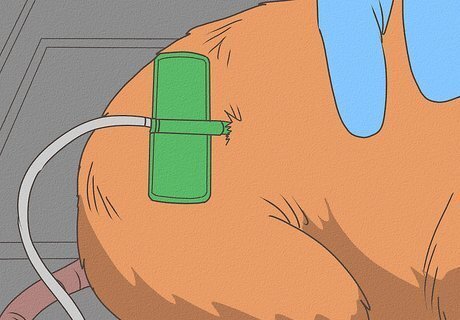
Administer subcutaneous fluids with a butterfly catheter. Subcutaneous fluids are often prescribed only if your guinea pig cannot take oral medication or liquid medication via their mouth. The vet can show you how to insert a butterfly catheter into your guinea pig. You will need to use a catheter to give your guinea pig subcutaneous fluids as a form of medication.

Place your guinea pig on a table facing away from you to give them eye drops. If your guinea pig develops eye issues, the vet may prescribe eye drops. You can administer eye drops by placing your guinea pig on a table, facing away from you. Then, hold the bottle dropper above and behind their head. Hold open her eye with one hand as you apply the drop from above her. This will ensure they cannot see the dropper clearly and get spooked as you try to give them the medication.
Doing Home Care

Place your guinea pig on flat, folded towels. While guinea pigs often live in loose bedding in their cage, placing your pet on flat, folded towels can help you to keep track of their urine and stool production. It may also be easier for them to lay down and walk around if they isn’t feeling well.

Keep your guinea pig warm with thermal wraps. Your guinea pig may feel chilled due to their illness. You can use these wraps to relieve sore muscles. The thermal wraps will heat up when exposed to air and stay warm for up to eight hours at a time. Make sure the thermal wrap is not too warm for your guinea pig or too tight on them. You can also wrap a water bottle in a towel and place it at one end of their cage for warmth. Guinea pigs with respiratory issues and digestive disorders should be kept clean, warm, and well rested during their recovery.
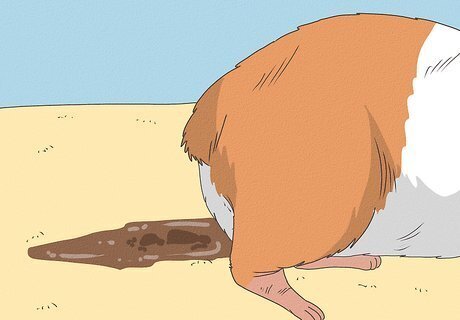
Monitor your guinea pig’s reaction to medication. You should note if your guinea pig’s symptoms get worse while on the prescribed medication, especially if they are on antibiotics. Many antibiotics can cause diarrhea and upset the balance of bacteria in your pig’s intestines. If you note any symptoms of a negative reaction to antibiotics in your pig, you should take them to the vet right away. The vet will likely stop the antibiotic treatment and prescribe another medication.
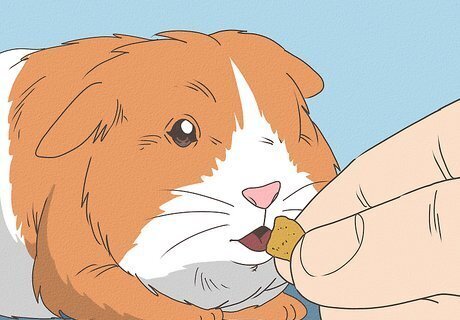
Hand feed your guinea pig if they do not have an appetite. If your guinea pig has an illness that causes them to lose their appetite, you will need to use hand feeding to try to get them to eat. Many ill guinea pigs will also stop urinating or eliminating due to malnourishment. It is essential that your guinea pig consumes food and water to help them recover. Adult guinea pigs should consume about 6 grams of dry feed/100 grams of body weight and 10 to 40 ml water per 100 grams of body weight. You should try to hand feed your guinea pig plain food pellets softened in water with minced parsley, vegetables, and carrots. You can also combine pet slurry with wheat grass juice or natural cranberry juice to make it more appetizing. To hand feed your pig, make sure they are standing upright on a flat surface or flat on their stomach. Do not rest them on their back as this can be a choking hazard. You can also place your pet in a little pouch or wrapped in a towel. It may help to position your pig facing away from you. Put food in your hand and place it in front of your pig. Feed them slowly so they have time to chew and swallow.
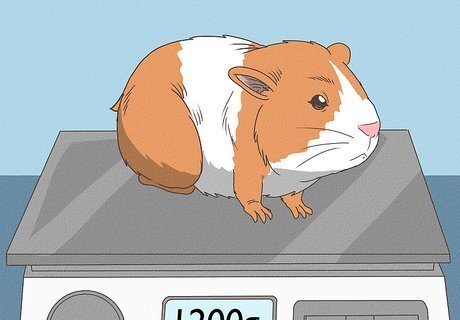
Weigh your guinea pig once a day. You should monitor your guinea pig’s weight by using a kitchen scale to weigh your pig one or twice a day. This will help you to determine if the hand feeding is working effectively and if your guinea pig is starting to gain healthy weight, despite their illness. You can also use a chart to write down your pet’s weight each day and determine if their weight is improving.
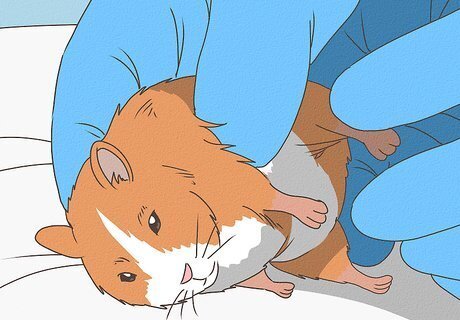
Bring your guinea pig to the vet if they are not showing signs of improvement. If your guinea pig’s symptoms do not improve despite medication and home care, you should bring them to the vet for further treatment.

















Comments
0 comment